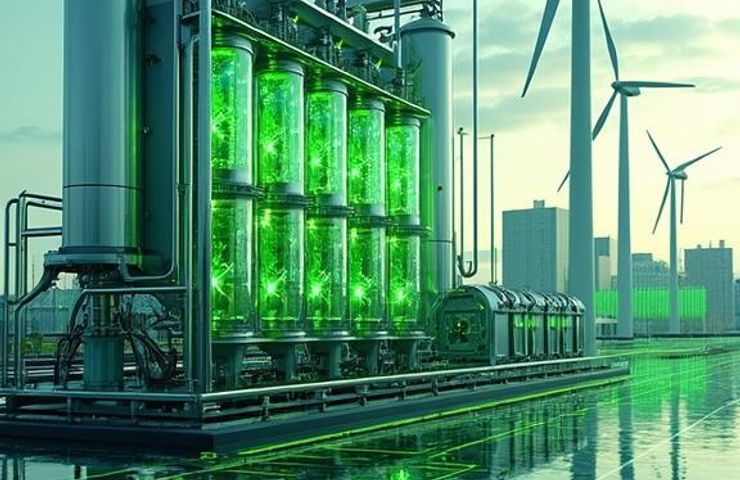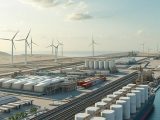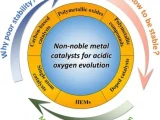
Electrolysis Market Set to Surpass $10B by 2036 Amid Green Hydrogen Surge
August 18, 2025Ever thought water could power a multi-billion-dollar industry? According to IDTechEx, the annual global market for water electrolyser components is set to top US$10 billion by 2036—almost double today’s figures as green hydrogen projects move from proof-of-concept to full throttle. By fine-tuning platinum-group metal loadings, layering in nanoporous polymer films, or even harvesting industrial waste heat, innovators are rewriting the playbook for what an electrolyser can do. And that’s before you pencil in smarter factories and slicker supply chains, which could turbocharge electrolysis efficiency even further.
Splitting water with electricity isn’t exactly new—champions of electrolysis were already tinkering with it back in the late 19th century. Fast-forward through most of the 20th century, and alkaline electrolysers were the go-to workhorses—bulky, pricey, but reliable. The oil shocks of the ’70s reignited interest, sure, but it wasn’t until renewable power costs plummeted after 2018 that R&D really caught fire behind PEM electrolysers and solid oxide cells. Now decades of tweaks have merged at a tipping point where green hydrogen can seriously challenge fossil fuels on both cost and performance.
So why the rush? Hard-to-abate industries—think steel, chemicals and heavy transport—see hydrogen production as their best shot at industrial decarbonization. Governments hungry for energy independence are piling on subsidies, carbon pricing and renewable mandates to kickstart a robust hydrogen infrastructure. Meanwhile, project developers and equipment makers are racing to lock down raw materials, scale up manufacturing lines and sign long-term offtake deals. In short, the stars have aligned for a major build-out, with electrolyser components playing a starring role.
Advances in Catalysts and Electrodes
Catalysts are the secret sauce of any high-performance electrolyser. De Nora has dialed in mixed-metal oxide electrodes that strike a sweet spot between activity and durability—even in the acidic heart of PEM systems. Over in the UK, Jolt Solutions has unveiled its Sparkfuze coating process, which slaps on platinum-group metals in minutes instead of hours. By trimming production cycles and optimizing precious-metal usage, these breakthroughs are chipping away at both capex and opex, making top-tier catalysts a lot more affordable for large-scale projects.
Membranes & Separation Tech
Membranes might not grab headlines like hot new catalysts, but they’re just as critical. Traditional Zirfon diaphragms have dominated alkaline electrolysers for years, yet they start to struggle at higher temperatures and pressures. Enter Novamem, whose nanoporous polymer films embed ceramic nanoparticles to fine-tune ionic highways and stop unwanted gas crossover. The result? Higher conductivity, longer lifespans under the ups and downs of renewable power, and fewer service calls over the cell’s lifetime.
High-Temp Leap with SOECs
Solid oxide electrolysers marry electrical and thermal energy, pushing efficiencies north of 90 percent. In the UK, Ceres Power is pioneering metal-supported stacks that shrug off rapid temperature swings while staying thin and robust. Down in Denmark, Topsoe is championing gadolinia-doped ceria (GDC) electrolytes operating at a milder 650–800 °C. That cooler window means you can tap into industrial waste heat or grid power without a major thermal-management headache.
Supply Chain & Sustainability
Behind the slick prototypes lie some hairy supply-chain puzzles. Iridium for PEM catalysts is in short supply, and rare-earth oxides for SOECs aren’t exactly off-the-shelf commodities. One price spike or geopolitical bump can throw a project’s economics out of whack. That’s why researchers are laser-focused on cutting precious-metal loadings or swapping in mixed-metal blends. Shaving even 30 percent of your iridium use doesn’t just cut costs—it beefs up resilience against market shocks and tightening regulations.
Collaborations & Partnerships
No one’s flying solo in this space. From Europe to Asia, joint ventures are popping up to tackle scale-up head-on. Manufacturers are teaming up with catalyst chemists and membrane experts, while cross-continent alliances link electrolyser makers with project developers and utilities. Public–private partnerships are underwriting gigawatt-scale pilot plants, and industry coalitions are sharing the playbook for materials sourcing and recycling. This spirit of collaboration isn’t just warm and fuzzy—it’s vital for de-risking investments and speeding up commercial roll-out.
Policy & Market Drivers
Policy frameworks are evolving in lockstep with technology. Carbon markets are tightening, renewable portfolio standards are climbing, and national hydrogen strategies are sprouting up everywhere. Direct subsidies for electrolyser capex, tax credits for green hydrogen offtake, and funding for hydrogen infrastructure have become table stakes in many regions. That regulatory clarity slashes financing risk and draws institutional capital, making it easier for first movers to secure ports, pipelines and grid connections well ahead of the broader rollout.
The Road Ahead
All signs point to a rapid expansion of the electrolyser ecosystem. With component costs sliding, system efficiencies soaring, and supply chains inching toward maturity, hydrogen production is poised to leap from niche to mainstream. Sure, scale brings fresh challenges—factory footprints must grow, skilled workforces must be trained, and recycling pathways built. It’s ambitious, no doubt. But backed by IDTechEx’s US$10 billion forecast, it also feels inevitable. As the world races toward net zero, the nuts and bolts of electrolysers will shape not just a market, but the future of sustainable energy.



 With over 15 years of reporting hydrogen news, we are your premier source for the latest updates and insights in hydrogen and renewable energy.
With over 15 years of reporting hydrogen news, we are your premier source for the latest updates and insights in hydrogen and renewable energy.